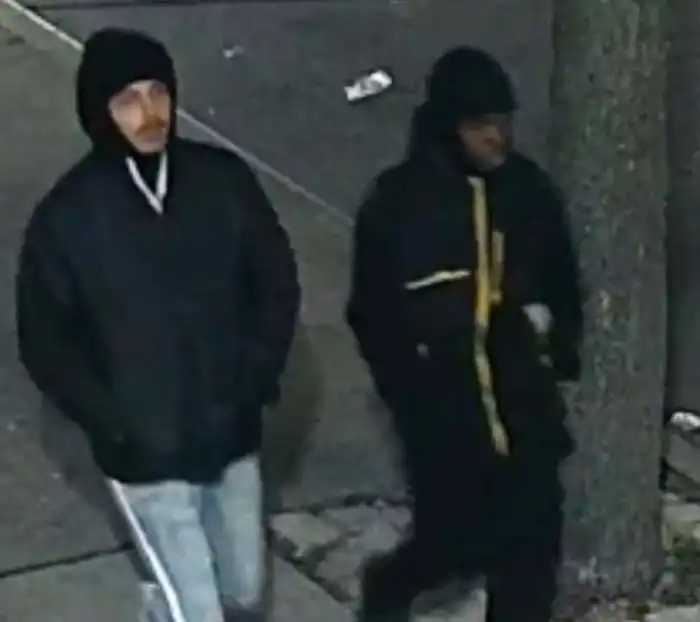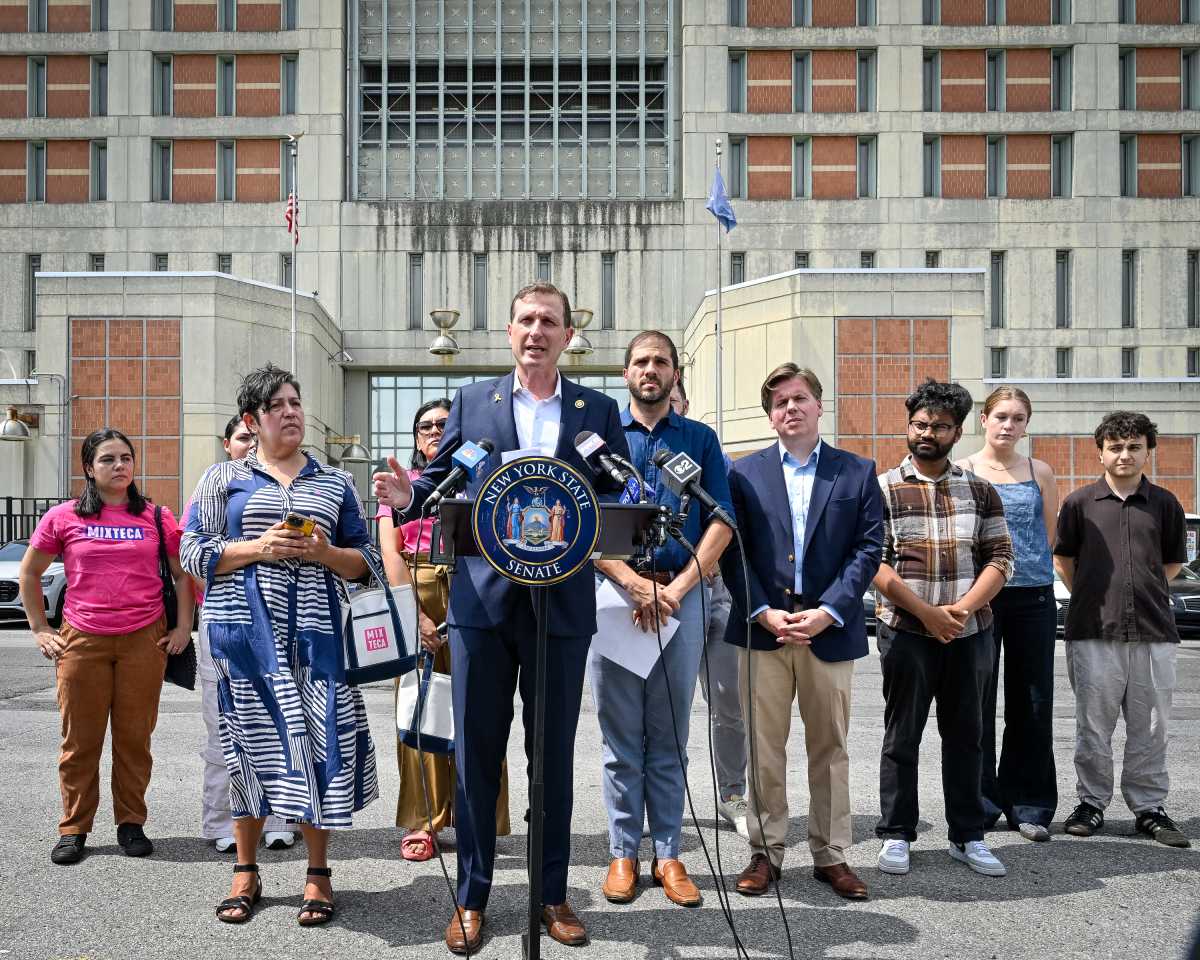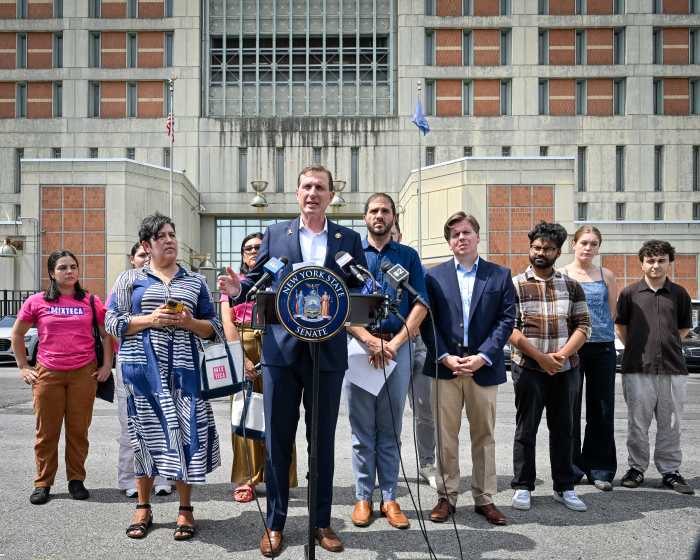By Jessica Mintz
She is the creative one, the parent that the P.T.A. at P.S. 41 in the Village seeks out when they need a poster, an idea, something visual. An art director by profession, Laurie Fried is a natural choice for that kind of thing.
This spring, Lois Weiswasser, the principal at P.S. 41, approached Fried for a new project that would combine Fried’s creative talent with her interest in Greenwich Village history. The school’s 45th birthday was approaching, and Weiswasser wanted something for the June celebration — a pamphlet, maybe — that would illustrate the history of the school.
Fried’s ties to the school are personal and long-standing. Her husband went to P.S. 41, and she has one daughter enrolled now. “I hope I have grandchildren who go,” she says. But when Fried signed on, and hung a notice in the P.T.A. window outside the school calling for submissions of P.S. 41 memories and memorabilia, she couldn’t have anticipated the richness of the material that would end up at her fingertips, or the volume of detective work that each source would beget.
One of her first sources, Barbara Riddle-Dvorak, had just returned to the Village after being away for 25 years. On her way to work one day last spring, she saw Fried’s notice.
“I thought, ‘Gee, 45th birthday, that’s not quite right,’” said Riddle-Dvorak, who was one of the last P.S. 41 classes to graduate in the old building. “It turns out that the birthday party was for the new building.”
Riddle-Dvorak, a novelist who is currently working on a collection of short pieces about the Village in the ’50s, had a wealth of information for Fried; after their conversation, Fried had gained both an editor-confidante, and the sinking sensation that the history of the school wasn’t going to fit in an eight-page pamphlet.
Since then, Fried has continued to be a mom and an art director, but has added journalist/detective/book editor to her resume.
Fried projects that the book will run about 100 pages when it’s done. Its contents span the history of P.S. 41 from its first construction in 1867 (in the place where the current school playground stands), through that building’s demolition and the rebuilding — all in 18 months — of the new school, which opened in 1957, according to Fried.
The new P.S. 41 under construction in 1957.
For now, Fried plans to structure the book chronologically, beginning with a short history of the neighborhood and including what information she was able to find about the school in the 1800s. But much of the project has involved compiling the oral histories and memorabilia from the people — parents, teachers, administrators and volunteers —who have made the school a Village institution over the last half-century.
“It’s a puzzle,” says Fried, one that she’s enjoying solving very much. Some of Fried’s sources came to her, like Riddle-Dvorak. Some she tracked down through a network of past P.T.A. presidents and other involved parents and teachers dating back to the ’50s and ’60s. She has pored over old newspapers and discovered disintegrating old photographs. But a lot of her work has been listening.
“There are people with rich histories there,” says Fried, “a lot of students that went there and are now parents [of P.S. 41 students], and parents who are now staff there,” like Alice Burton, the school secretary, who was a parent at the school in the ’70s.
“Every time I get a new contact, I walk away with two more,” says Fried.
For Riddle-Dvorak, a latchkey kid of the ’50s, school was the center of her life — a second home. At a time when the city was safer and the after-school curriculum less rigid, she remembers haunting Village parks and playgrounds and swapping nights at friends’ dinner tables. She remembers P.S. 41 as being “known as a good school” and ahead of its time in terms of racial tolerance. Her class elected a black class president and a Chinese-American vice president.
The Village, then a bohemian mix of artists and intellectuals, has changed some, says Riddle-Dvorak — it’s more ethnically diverse, and a bit more self-conscious about its identity than it was during her childhood. But, she says, it remains a place of “openness and friendliness,” and from what she saw at the 45th birthday party of P.S. 41, the school’s parents and teachers remain as community-focused as ever.
In spite of the generally positive experiences her sources have had at the school, the book is more than “just waxing nostalgic,” says Fried. There are repeating patterns at P.S. 41 that go beyond individual memory, and define the school as a forward-thinking, politically active institution that was, and is, always willing to lend a hand.
Jo LoCicero, who was P.T.A. president in 1965-’66, says, “The year I was president, I had 20-something people on the board. The parent body itself was an exciting bunch of people — very smart, very giving.”
A group of more than 20 women came into the school to work with the non-English-speaking students, says LoCicero.
Around that time, LoCicero also led citywide efforts to protest the possible repeal of the state’s so-called Blaine Amendments, which keep public funds from going to parochial schools. Recalls LoCicero, “Those involved in United Parents Associations [of New York City] were strongly against aid going to parochial schools. We didn’t feel that our kids were getting enough.” LoCicero raised enough money from other parents’ associations to take out a full-page ad in the Daily News the day before the issue was to appear on the ballot.
LoCicero went on to become a public school teacher. While no longer P.T.A. president at P.S. 41 during the school strikes of 1968 and 1969 — a racially-charged period following the dismissal of white teachers from a primarily black school in Brooklyn — LoCicero recalls it as a grim but defining moment in the history of the Village school. LoCicero tells stories of parents breaking into the school to hold classes after strikes closed the doors, and the defection to P.S. 3 of some of P.S. 41’s more radical parents who, says Fried, “wanted more of an active say in their school.”
Today, P.S. 41 parents remain active and involved, says current P.T.A. president Jill Tapia, “especially on some of the issues, like reduced class sizes and budget cuts.”
Tapia, another source for Fried’s book, attended P.S. 41 from 1974 to 1980. As a mother of two and with a full-time job, one of her goals as P.T.A. president is to help other busy parents realize that the organization is “a revolving group of people. Everyone is welcome to join and learn and contribute.”
“We want to have a good school,” says Tapia. With private schools an ever-more-alluring alternative to students in the P.S. 41 catchment area, Tapia is fighting to keep the institution strong.
“We need to raise a lot of money every year. Without the support of our parent community, we wouldn’t be able to do that,” says Tapia. “We need money to do lots of things — we pay for copiers, we pay for paper…the only thing we don’t pay for is staff. We don’t have textbooks, but we’re forced to pay for copiers and copy paper — that’s how our kids get their homework.”
Tapia says that the current group of parents has been politically active, participating in any way they could to protest last year’s education budget cuts, but mostly, it comes down to raising more money. There’s even a team of parent volunteers in place who are professionals with grant-writing experience, and who are going after more corporate sponsorship for the school. “We’re looking for any angle,” says Tapia.
What has made, and what continues to make the school unique, is both its community-centered values and its particular kind of backbone. “We’re not afraid of things,” says Fried. “When there’s any kind of crisis, no one’s shy about stepping up to the plate and doing what needs to be done.”
That philosophy inspired P.S 41 schoolteachers and children to rally to save what is now the Jefferson Market Regional Branch of the New York Public Library from the wrecking ball in the early 1960s. It carried the school through heavy budget cuts in the 1970s and inspired it to enroll students from local homeless shelters during that same decade, providing them with books and materials. The school has consistently protested academic tracking and standardized testing, and, says Riddle-Dvorak, parents always demanded that kind of attitude from the school’s principals and teachers. Most recently, in the wake of Sept. 11, P.S. 41 took in 600 students who were evacuated from P.S. 234 in Tribeca, doubling the number of kids for months.
For her part, Fried is still buried under piles of notes and papers; she continues to find one noteworthy story after another. Riddle-Dvorak, who just finished reading what Fried has put together thus far, says, “I think it’s going to be quite a contribution for New York history, and history of the Village. For me, the amazing feature is that it’s beyond a nostalgic exercise. [The school is] more than just the neighborhood elementary school.”
And, Riddle-Dvorak adds, “It’s also very reassuring to know it wasn’t just in my memory that this was a special place.”
“My heart and my history are in this school,” says Fried, but she’s reluctant to step into the spotlight. “That really goes for a lot of people here.”
Also Read:



































